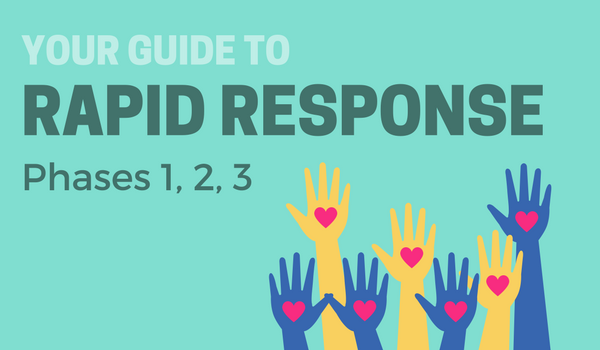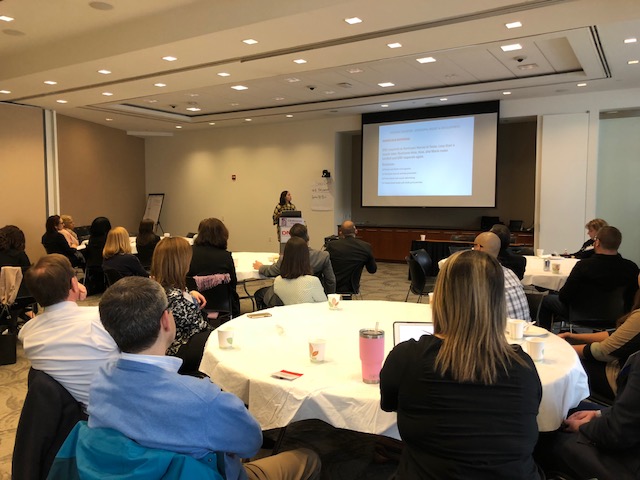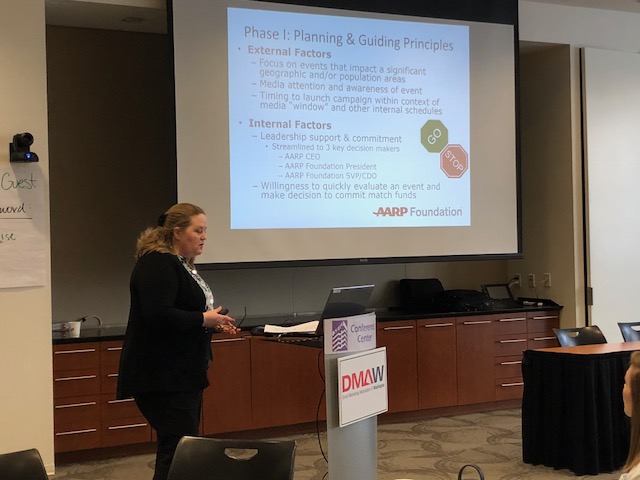Your Guide to Rapid Response: Phases 1, 2, 3


When direct marketers hear the words “Rapid Response,” I think it’s common practice for us all to be numb to the phrase. After all, aren’t we rapidly responding to multiple things every day?
And while this is true, it became clear when sitting at the DMAW Lunch and Learn about Rapid Response Fundraising and hearing from AARP Foundation’s Laurie Houseknecht and Laura Cole from Sanky Communications that successful ‘rapid response’ fundraising requires exceptional planning. It requires the ability to be flexible, patient and so in tune with your organization, or client’s mission, that you are ready to respond to a disaster or an emergency and know exactly what’s needed to get from Step 1 to launch, at any given time.
Phase I – Is a Response Necessary?
- When working on—or in partnership with—a program that does rapid response fundraising campaigns, it’s important to listen and monitor the news and current events.
- Notify the team when something happens that seems like it should be responded to – this should be a team that has been picked ahead of time so that it’s clear who the decision makers should be.
Decide if a response is appropriate. Is there enough media coverage to sustain a response depending on the channel in which you are planning to respond? If so, what efforts need to be paused to make room for that response?

Phase II – We’re Responding. Now What?
- Once a decision is made to respond, the organization should be developing internal statements, talking points and creative for the campaign.
- Finalize the campaign plan. What channels will be included in the response? Is this an advocacy opportunity, a fundraising opportunity or both? What is appropriate and for what audience (acquisition, donor, lapsed, all)?
- Launch your response. When you launch your response, you don’t necessarily need to wait for all pieces of the campaign to be complete to launch all at once –pieces that are ready first (web articles, Facebook posts, etc.) can go up before an email launches or a direct mail piece goes out, as long as that works with the overall creative and strategy.
Phase III – It’s Not Over Yet
- Thank your donors who gave during the rapid response campaign and send regular updates to this audience if that is relevant to the overall rapid response campaign (i.e. if your organization will be on the ground long-term) to keep this audience engaged.
- Segment and message rapid response donors accordingly. Figure out how best to tie this audience into your ongoing work and mission without breaking the bank.
- Review what worked and what didn’t work about your rapid response campaign so that you can be prepared for next time. And a great takeaway here – even if there’s a pain point that you can’t necessarily work around or solve, being able to pinpoint that it’s there can be helpful in planning.
And perhaps one of the most valuable pieces of advice – in rapid response, it’s important to remember that everything may not be perfect. Sometimes, you may not have THE best photo or THE best subject line. But timing is extremely important, and the team may need to be reminded of that fact as strategy and creative is developed and approved.
Thank you, Laurie and Laura, for making this direct marketer see the difference between ‘rapid response’ and ‘rapidly responding’ – I certainly won’t be numb to the phrase anymore, and I know everyone else who attended won’t be either!

Courtney Lewis is Vice President at Chapman Cubine and Hussey (CCAH) and can be reached at clewis@ccah.com.
